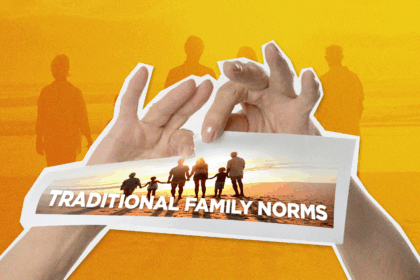In Pinoy Big Brother (PBB), every week is a chance to save your bets. And every week is an opportunity to endanger your wallets.
PBB is no stranger to Filipinos, since its creation in 2005, the Filipinos have witnessed rising stars come from the blue and yellow house. Notable figures include: Melai Cantiveros, Maymay Entrata, and Slater Young.
Now, amid ABS-CBN’s pivot to digital platforms following its franchise loss in 2020, PBB has taken on a new function: a tool for direct audience monetization.
Housemates for Sale
In the past seasons, voting was done through Short Message Service (SMS)—a straightforward system that cost a few pesos per text. The model complemented ABS-CBN’s conventional advertising income streams. But the digital revolution introduced new opportunities. With the increasing popularity of livestreaming, app incorporation, and e-wallets, the network incorporated several income streams built into audience engagement.
Together with livestreaming platform Kumu, housemates now have to do tasks live, while viewers give “virtual gifts” that can be turned into actual income. Voting, previously done through text messages alone, is now conducted on various digital channels—each of which is attached with a price.
One vote through Kumu’s in-app currency can cost ₱20 or more, depending on the mechanism. Other sites, like the ABS-CBN digital ecosystem, package voting into subscription packages or paywalled access behind premium content.
This model makes the viewer transition from a passive audience member to an active monetary contributor to the show’s result.
Streaming for Survival
In practice, ABS-CBN has made audience interaction a form of capital.
“Media companies are increasingly relying on participatory audiences as sources of value—transforming fan engagement into microtransactions and digital labor,” explained Jonathan Corpus Ong, a media scholar specializing in digital labor and social media economies in the Philippines, in his study.
This perspective is echoed internationally as David Craig, a media scholar focused on television and digital culture, told The Guardian in 2019 that “television audiences have become active participants, and media industries now increasingly rely on this participation not just for ratings but as a source of revenue through microtransactions, digital engagement, and fan labor.”
Networks like ABS-CBN, which have faced significant revenue challenges after the loss of their broadcast franchise, have had to reconfigure their entertainment assets to capitalize on new earnings models. Formats like PBB, with their cyclical voting mechanisms and passionate audiences, have become perfect laboratories for consumer-driven monetization.
Heartbeaten
In 2024, ABS-CBN added a new twist: for the first time, GMA Network artists, its long-time rival, joined the PBB house. The move, celebrated in media headlines as historic, demonstrated not only creative cooperation but also a broader effort to expand the market.
By bringing Kapuso stars into the historically Kapamilya-oriented program, ABS-CBN welcomed the show to new fan bases—most of whom brought fresh wallets, increased voting power, and new shopping behaviors.
Industry observers point to the ABS-CBN and GMA co-production agreement in 2023 as a turning point in the way local TV reorganized its commercial structure. Since then, several programs have featured cross-network casts, blurring traditional brand boundaries and uniting diverse audience markets.
As Erik Capistrano highlights in his study on fan passions and consumer engagement behaviors in the Philippines, “Fan passions are indeed favorably significant drivers of online consumer engagement behaviors of pop cultural content consumption, community formation, conversation making, and commerce behaviors.”
Fans as Funders
To some viewers, particularly young Filipinos, paying for PBB votes or livestream tokens might seem like a small, even negligible expense. However, when combined, these microspending habits fuel a multi-million peso digital economy—one that plays a critical role in ABS-CBN’s survival as a non-franchise player.
This shift raises important concerns about consumer protection, especially in shows that blur the line between entertainment and expenditure. Many fans, especially those from lower-income backgrounds, engage in voting as a form of emotional support, often unaware of the real financial impact behind their participation.
Thea Divina, a writer from Manila Magazine, noted in her critique, “In an era where entertainment is interactive, PBB proves that reality TV is no longer just about what happens on screen—it’s about how the audience reacts, responds, and reshapes the narrative.”
A Profitable Formula
In spite of the criticism, the formula looks to be effective. PBB continues to be among the most viewed online shows on ABS-CBN’s properties. Its livestreams are perennially among the most engaged on Kumu. The show also has social media traffic, influencer partnerships, and branded content.
What began as a social experiment within a camera-packed house is now part of a larger commercial approach—one which converts each fan, each vote, and each post into a possible cash cow.
ABS-CBN has not released official estimates on how much it generates from the digital activity around PBB. But the company’s financial reports indicate growing revenue from digital content and viewer interaction—telling proof of a turn away from traditional broadcast revenues.
With ABS-CBN still without a free-to-air license, programs like Pinoy Big Brother do double duty: content for the audience, and commerce to keep the business going.








